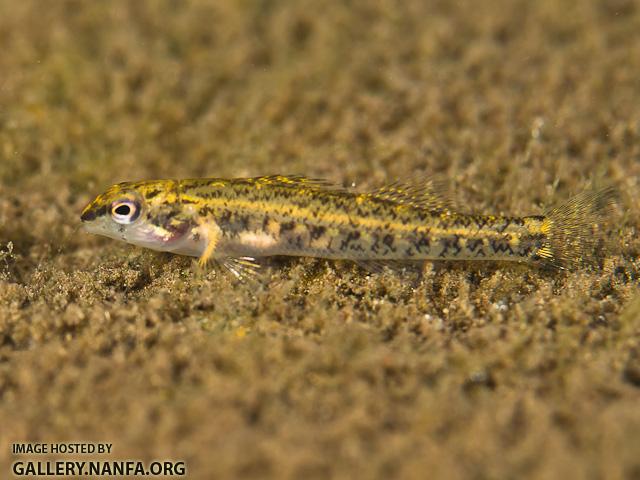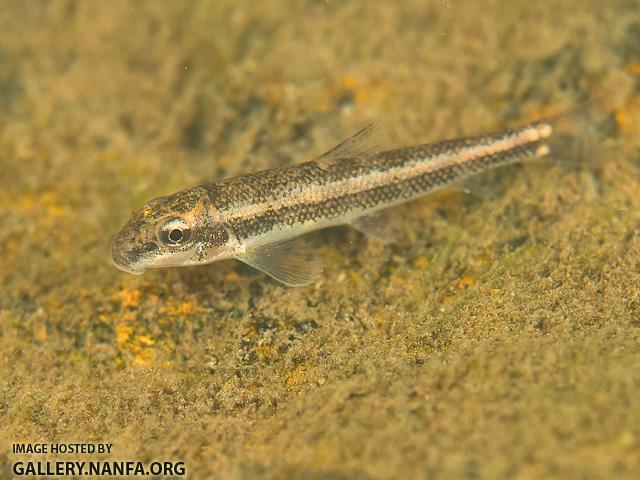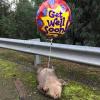Does anyone have any pictures of very young, wild darters? I feel like the smallest I've ever seen them was around 1", but by my guess, that puts the age around a year. Anyone seen anything smaller? Admittedly I'm only really in the main channels of streams looking for display and photo worthy specimens.
Has anyone specifically gone looking for, and found them in a different habitat near the shore or side channels with much less flow? This is certainly an area or darter biology I am lacking in. Thanks.

Wild darter fry/YOY
#1

Posted 13 February 2016 - 10:21 AM
#2

Posted 13 February 2016 - 10:33 AM
#3

Posted 13 February 2016 - 12:53 PM
Yes, the juveniles are usually found in shallower, lower flow areas. I've seen many from 1/4 inch and up to an inch. Oddly the Tippecanoe darters which are small at adult size are often found in strong fairly deep riffles in some areas like PA.
Mohawk-Hudson Watershed
Schenectady NY
#4

Posted 13 February 2016 - 12:54 PM
I just wonder if this one of those instances where when you're not looking for something, you'll never see it. Even if it is right there in front of you. My guess being they inhabit calmer waters and/or such small juveniles don't have much color at all and blend in even better------making them much harder to see.
#5

Posted 13 February 2016 - 12:57 PM
Mike--I've seen Tippecanoe darters in western VA, and in the same habitat you describe. It is interesting considering their size and how I don't see juveniles of other species that are ~1" alongside the Tippecanoes.
#6

Posted 13 February 2016 - 01:18 PM
There are sharks in every ocean...except Billy Ocean.
#7

Posted 13 February 2016 - 05:50 PM
Darters I have seen as fry (< 1") typically hang out in locations away from larger structure where larger darters and predators hang out. When in pools the darters get up in very shallow water like similar sized minnows do. Some like to stay over coarser cobble where they can get down into it easily. In large riffle, pool, and run complexes they can sometimes saturate the environment for a time but when not they are often in the shallow coverless runs and shallow deadwater section of pools.
Species I do not understand well are those operating over sandy substrates and close to plants like some the northern lake dwelling species.
Overall I do not think their is a generic pattern for this as a function of simply being a darter. Species and possible population differences are likely to be found when looking closely.
#8

Posted 13 February 2016 - 09:24 PM
Here are the baby darters I mentioned earlier.

This one was about 3/8" long and was right off the bank of the Conasauga River.

This one , probably a Snubnose, was about 3/4"-1" long, was in the Collins River and was closer to the middle of the stream.

Obviously not a darter, but a Hogsucker about 1" form the Conasauga River in a high flow area near the middle of the stream.
There are sharks in every ocean...except Billy Ocean.
#9

Posted 13 February 2016 - 09:40 PM
Bryce, those are simply amazing.
#10

Posted 14 February 2016 - 01:10 AM
Wild baby darters? I thought those only existed in captivity? ?
-The member currently known as Irate Mormon
#11

Posted 14 February 2016 - 07:06 AM
Very nice. Thank you, Bryce. You're right, I would have never seen them and there have probably been lots in my field of vision over the years--but I never stopped to actually look for them. I'm headed back out this fall and hope to see some of that size this time.
Do you find them just as sporadically as you do the adults? Or do you find pockets of them in higher concentrations?
#12

Posted 14 February 2016 - 07:50 AM
And yes, great photos, Bryce. Especially love that baby probably snubbie!
"No thanks, a third of a gopher would merely arouse my appetite..."
#13

Posted 14 February 2016 - 09:37 AM
I step on the darter nurseries almost every time i access a stream. The little guys are easy to see but I could never get such good photos. They are exceptional!
#14

Posted 14 February 2016 - 10:29 AM
#15

Posted 14 February 2016 - 10:34 AM
Bruce, are you seining? If so, what size mesh are you using?
#16

Posted 14 February 2016 - 11:33 AM
#17

Posted 14 February 2016 - 02:27 PM
Thanks all for the complements. There's nothing sporadic about finding adult darters around here, certain species maybe. I've seen pods of post larval fry that look like animated slivers of glass. But as I said before you have to be looking for them, but once you see one/some and you have a search image in mind you'll start seeing them everywhere you look.
There are sharks in every ocean...except Billy Ocean.
#18

Posted 14 February 2016 - 02:51 PM
Great photos Bryce. I've seen many tiny darters that look similar to your first one, but I usually can't be sure what species they are. Your second one has a more distinct look. So, that would be a cherry darter? Or, is there another snubnose species in the Collins?
#19

Posted 14 February 2016 - 08:14 PM
There are sharks in every ocean...except Billy Ocean.
0 user(s) are reading this topic
0 members, 0 guests, 0 anonymous users
















